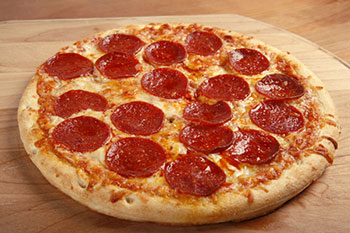More Health and Nutrition Bites
Related
Alcohol is good for your heart
Studies have noted that moderate alcohol use is associated with a lower risk of heart attack in those persons with known cardiovascular disease or in higher risk populations. Yet no studies are focused specifically on alcohol use and whether it is by itself a protecting factor. Previous studies only look at alcohol intake as one of a combination of factors. (Arch Intern Med 2006;166:2145-2150)
Alcohol and Type 2 Diabetes
You're almost certainly aware by now that being overweight is just one of the risk factors for type 2 (non-insulin-dependent) diabetes. But you may not know that uncontrolled diabetes can lead to vision loss, kidney failure, amputations, heart problems, and sexual dysfunction - among other long-term effects.
Alcohol-Free Beer: an Antioxidant?
Older studies have linked eating more red meat with a higher risk of heart disease and type 2 diabetes. But is it the red meat itself, the higher saturated fat that's associated with red meat, or something else? Other studies have suggested that the culprit might be increased inflammation due to a higher level of blood iron. On the other hand, for those who have normal iron levels, changing the amount of red meat intake has been shown to have little effect on blood iron levels.
Health & Nutrition Bites
Get the latest health and diet news - along with what you can do about it - sent to your Inbox once a week. Get Dr. Gourmet's Health and Nutrition Bites sent to you via email. Sign up now!
Why pizza and alcohol go together

Researchers in The Netherlands noted that drinking alcohol is known to increase food intake in the short term and sought to understand why. They chose to investigate whether this increased consumption is due to "food reward," which has two components: "liking" (related to the taste of the food), and "wanting" (related to the desire to eat, regardless of the specific food). In essence, does drinking alcohol make you like the taste of things more, or is it that you just want to eat?
Twenty-four healthy men of normal weight were recruited to participate in their study. (Only men were recruited because there is a stronger association between moderate alcohol intake and body weight in men than in women.) Food reward is thought to be affected by the sensing of nutrients in the gut (after a food is swallowed) as well as the oral sensation of tasting and chewing, so the researchers designed their study with six variations (Appetite 2015;89:77-83). Each participant visited the lab on six different days and was given an orange juice drink that on three of the six occasions contained vodka. After the beverage, they were asked to either chew and swallow a local sweet cake, chew and spit out the cake, or they were given no cake at all (the control condition). How much they "liked" or "wanted" various foods was then measured using a standardized questionnaire including pictures of various types of foods.
Forty-five minutes after the orange drink the participants were provided an all-you-can-eat lunch consisting of bread and an assortment of toppings, including high-fat savory meats (pate or salami), low-fat savory meats (lean ham or beef), high-fat sweet spreads (e.g., Nutella), or low-fat sweet spreads (jellies or jams). What they ate and how much was recorded.
The researchers were interested in whether the swallowing or not-swallowing of the cake would affect how much the participants ate at lunch. Swallowing the cake did indeed decrease how much they ate at lunch, regardless of whether they had been given alcohol or not. On the other hand, just chewing the cake made no difference, as did not having cake at all. Interestingly, the results from the questionnaires regarding various foods showed that when they were served alcohol, the participants reported liking and wanting to eat savory and high-fat foods more than other foods.
That liking and wanting was born out. Those who had been given alcohol consumed more calories at lunch - about 20% more. Further, those who had been given alcohol tended to eat more of the savory toppings and more bread: savory toppings accounted for 52% of the increase in calories, while bread accounted for 35%.
What this means for you
The participants in this study, all of whom were moderate drinkers, were given just 20 grams of alcohol - the equivalent of about 2 drinks. While we know that alcohol is good for you in moderation, bear in mind this tendency to eat more (especially high-fat savory things like pizza) after drinking. If you're working on your weight and not making as much progress as you'd like, it might be best to cut out alcohol completely until you've reached your goal.
First posted: February 18, 2015
